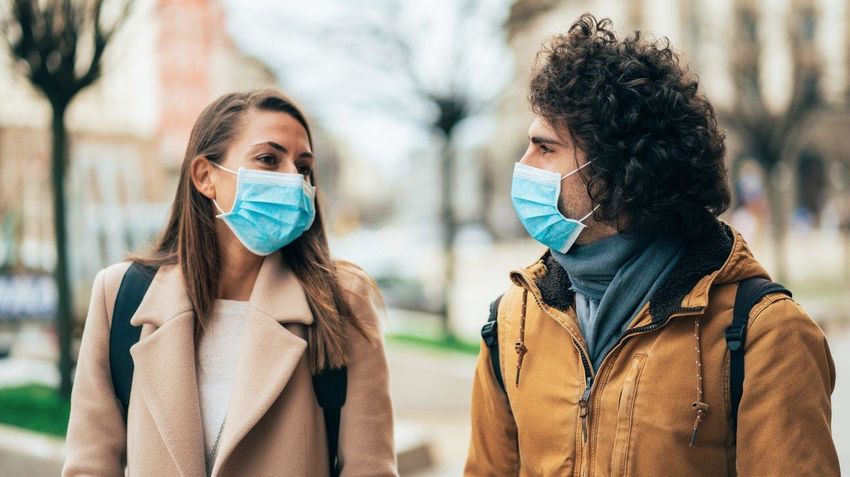How to tell the difference?Coronavirus, allergies, flu?
The 2019 coronavirus pandemic has claimed many lives around the world. There is panic everywhere. One day, you wake up with a fever, body aches, and chills. How can you tell if it’s a coronavirus, allergies, or flu? It’s possible to be under the weather, but that doesn’t mean you have a coronavirus.
Let’s find out how to tell the difference.
New coronavirus
Coronavirus is an infectious disease that spreads rapidly around the world and COVID-19 can cause serious illness in people of all ages. Older people and people with underlying health problems (such as diabetes, heart disease, and lung disease) are at higher risk of developing a serious COVID-19 infection. To date, there is no cure or vaccine for COVID-19.
Symptoms of COVID-19
– Fever and/or chills
– Shortness of breath or difficulty breathing
– Cough (usually a dry cough)
– Pain (sometimes)
– Sore throat
– Tiredness
– Headache
The virus that causes COVID-19 is spread from an infected person to a healthy person by droplets produced when the person exhales, coughs, or sneezes. These droplets are not light do not remain suspended in the air and fall quickly to the floor or surfaces.
The virus can be spread by breathing when you are near an infected person. If you touch an infected surface and then touch your eyes, mouth, or nose, you may become infected with COVID-19.
If you are on a contaminated surface or touch a contaminated surface followed by your eyes, nose, or mouth, you may become infected by inhaling the virus.
To avoid contracting COVID-19, wear a mask when you go outside and avoid touching your face. Wash your hands frequently with soap and water and carry a disinfectant with you.
If you have symptoms of COVID-19, it is important for your safety and that of those around you to be tested.
Influenza
Influenza or seasonal flu is mostly the raging flu. Influenza is a respiratory infection caused by a virus. It can affect your throat, nose, and lungs. The flu can last from 5 to 7 days.
Symptoms of influenza
– Fever and/or chills
– Fatigue
– Cough (usually a dry cough)
– Runny nose
– Aches and pains
– Sore throat (sometimes)
– Diarrhoea (sometimes in children)
Getting vaccinated is a good way to prevent influenza. If you still catch the flu after you have had the flu vaccination, you will have less severe symptoms than someone who has not had the flu vaccination. During the flu, it is best to get plenty of rest and drink plenty of fluids. You can use acetaminophen (Tylenol) or ibuprofen (Advil, Motrin).
You need to remember that antibiotics do not help with viral infections. Usually, the infection needs to go on, so it is best to just wait and see. However, if your viral symptoms improve and then suddenly come back, it is best to contact your healthcare provider.
Allergies
Seasonal allergies occur at certain times of the year. Seasonal allergy symptoms usually occur when pollen particles are released from trees, weeds, and grass. In people who suffer from seasonal allergies, their immune system releases certain chemicals to fight off the allergens, which can lead to allergy symptoms.
Allergy symptoms
– Sneezing
– Runny nose
– Coughing
– stuffy nose
– Tears
– Headache
– Fatigue
In spring, pollen is the most common cause of allergies. From plants, pollen floats in the air. Pollen wreaks havoc on the body’s immune system of people with pollen allergies.
During spring allergies, the body’s immune system releases histamine to fight the allergens in the body; it can trigger symptoms such as itchy eyes or a runny nose. It can also be seen that allergy symptoms increase on windy days when there is a high level of pollen in the air.
If you suffer from allergies, you can take over-the-counter medication such as antihistamines. Nasal sprays can be used to reduce sinus congestion and decrease inflammation. You can also use eye drops to relieve watery eyes.
To find out the cause of your allergy, your healthcare professional will carry out the following tests.
1. a drop of the allergen in liquid form is placed on the surface of the skin and the area is pricked with a pricking device. If the person has a reaction to the allergen, the result will be a swollen area of skin.
2. Inject a small amount of the allergen under the skin. If, after 15 minutes, something like a mosquito bite forms, you are allergic.
Our summary
Although all these diseases have similar symptoms, they are different. Allergies are caused by allergens and not everyone develops seasonal allergies.
Influenza and COVID-19 are different from each other. The two viruses spread at different rates. Compared to COVID-19, influenza has a shorter median incubation period and a shorter sequence interval, i.e. the time between consecutive cases. For COVID-19, the continuous interval is estimated to be 5-6 days, whereas, for influenza viruses, the continuous interval is 3 days.
COVID-19 and influenza viruses have similar disease manifestations. In some cases, they may cause mild or severe illness and even death. Both viruses are spread by contact and droplet transmission. Health measures such as frequent hand washing and good breathing etiquette, such as coughing into a tissue and discarding it immediately, should be maintained.
We need to protect our bodies in the wake of the new crown epidemic










